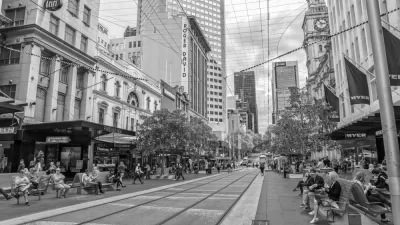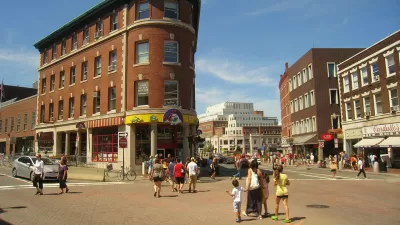The Guardian ran a long feature examining the life and work of Jan Gehl, well known to planners as the urban "rethinker" behind the movement to design cities and places to the human scale.
Ellie Violet Bramley's article provides background on the thinking behind the 40-year career of Jan Gehl in reclaiming cities and places for people, including a discussion of the public space/public life survey he uses to drive his team's data-driven approach.
These methods and principles, developed and refined since the 1960s, are “readily available to be used to make existing cities and new developments much better”. Members of Gehl’s Copenhagen firm, established in 2000 with one of his students, Helle Søholt, recite them like mantras: conversations are infected with enthusiasm and built around words such as “liveability”, “liveliness” and “density”.
Noting that Gehl believes that these principles can be applied unversially, Bramley goes on to elicit more details about how these principles have been applied in cities around the world in recent years—addressing Helsinki and London, among other cases. There's even discussion about how to manage the effects of gentrification, and the article relies heavily on conversation with Gehl's business partner Helle Søholt.
FULL STORY: Is Jan Gehl winning his battle to make our cities liveable?

Trump Administration Could Effectively End Housing Voucher Program
Federal officials are eyeing major cuts to the Section 8 program that helps millions of low-income households pay rent.

Planetizen Federal Action Tracker
A weekly monitor of how Trump’s orders and actions are impacting planners and planning in America.

Ken Jennings Launches Transit Web Series
The Jeopardy champ wants you to ride public transit.

‘Minnesota Nice’ Isn’t so Nice When You Can’t Find a Place to Live
The Economic Development and Housing Challenge Program can help address the scourge of homelessness among Indigenous people.

NYC Open Streets Organizers Call for City Support
The number of open streets projects has dropped year after year as volunteer groups struggle to fund and staff them.

Crime Continues to Drop on Philly, San Francisco Transit Systems
SEPTA and BART both saw significant declines in violent crime in the first quarter of 2025.
Urban Design for Planners 1: Software Tools
This six-course series explores essential urban design concepts using open source software and equips planners with the tools they need to participate fully in the urban design process.
Planning for Universal Design
Learn the tools for implementing Universal Design in planning regulations.
Heyer Gruel & Associates PA
Ada County Highway District
Institute for Housing and Urban Development Studies (IHS)
City of Grandview
Harvard GSD Executive Education
Toledo-Lucas County Plan Commissions
Salt Lake City
NYU Wagner Graduate School of Public Service





























